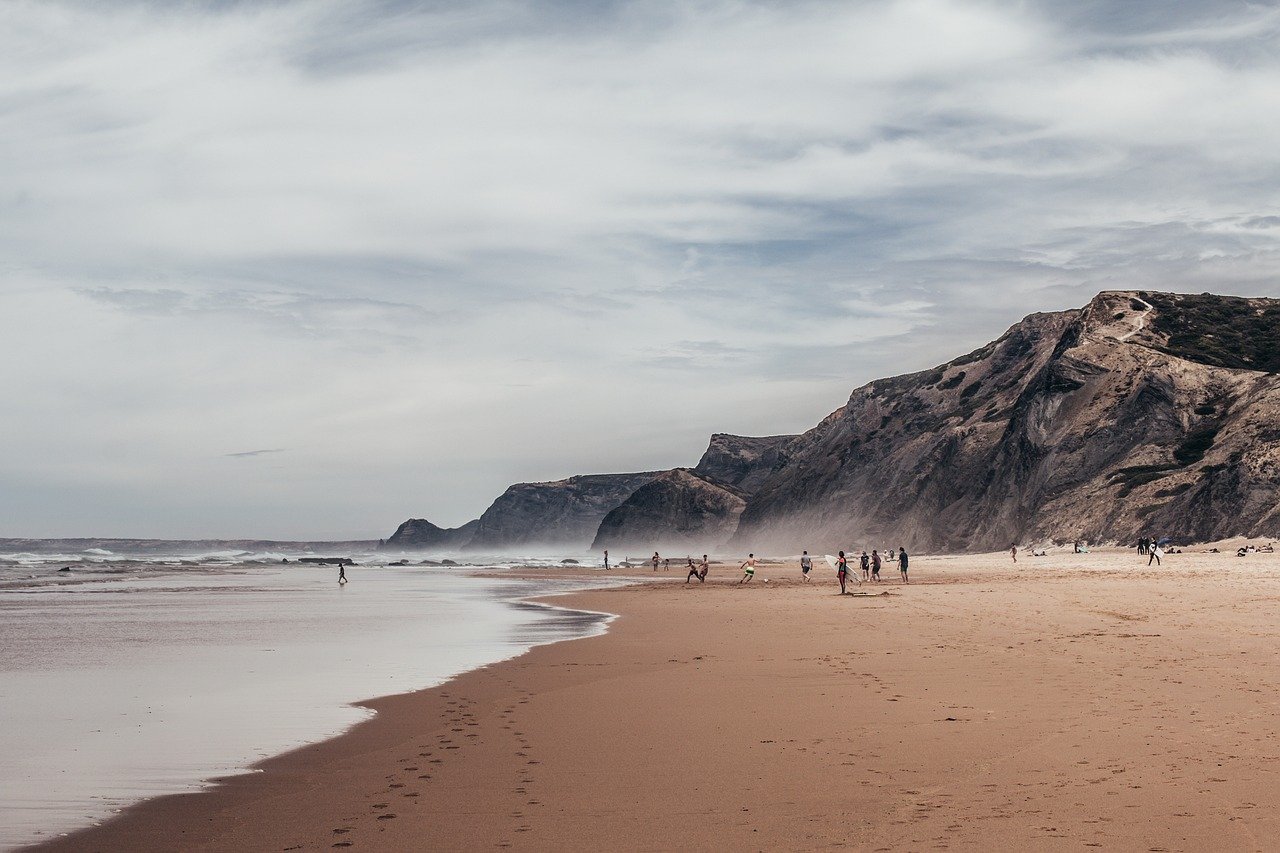If we talk about the Algarve, we immediately think of the entire south coast, and even more so, the strip between Faro and Lagos. But the Algarve also has a small coastline that is the extension of the Alentejo coast, between Praia de Odeceixe and Cabo de São Vicente. Costa Vicentina was classified as a natural park in 1995.

The western beaches
As we go down Estrada Nacional 120, as soon as we pass Ribeira de Seixe we enter the Algarve and it is right there that Odeceixe appears – the first Algarve town. The coast is splendid in this area and the beaches are wild, many of them deserted. There are cliffs and sand dunes. We are in a part of the Algarve still preserved from mass tourism, in fact there are no large hotels or resorts and for this reason there is still an unimaginable tranquility in other places. The sunset is incredible and if you can, don't miss the spectacle of watching the sun here. Odeceixe beach is just over 3km from the village and is a beach 'enclosed' in a beautiful cliff, sheltered from the wind. The view from the top of the hills is incredible and you just want to sit up there for a while and enjoy all that beauty, the waves in the cove and the fresh water of the river that meets the salty water of the sea. We continue along the coast towards the south until we reach Aljezur, the village that is dominated by its ruined castle dating from the 10th century and which symbolizes the struggles between Christians and Moors. We now take national road 268 because we want to continue closer to the coast. There are beautiful beaches around here – Monte Clérigo, Arrifana, Bordeira, Amado – among many others, not always easily accessible, but I think that is where the secret to preserving this area lies – the lack of good access roads to the beaches. But even so, the rugged coastline occasionally reveals small coves that hide surprises only accessible by dirt and half-lost paths that are worth exploring.


Sagres and Cabo de São Vicente
We continue along the road and spend a short time in Vila do Bispo because we want to get to Sagres. The sea is close to everything, the coast we went down and the other coast we started to see, the one that extends to Vila Real de Santo António. Sagres is a scattered village far from everything, but full of history and memories. It was here that Henry the navigator settled between 1394 and 1460 with his team of astronomers, navigators and cartographers to produce maritime maps, improve the astrolabe and invent a lighter boat to take greater advantage of the winds – the caravel. Sagres is a coast full of rocks, small coves and paths that delight walkers and cyclists who flock here in search of tranquility. From the Sagres Fortress the views are impressive, but I want to continue along the 268 towards Cabo de São Vicente where the views are equally unmissable. It's all a bit wild in this area, the wind blows strong and the sea waves are bigger and noisier, crashing against the rocks on the coast. In fact, in the Middle Ages it was thought that this area was the end of the world, a sacred place for the Romans who called it Promontorium Sacrum (sacred promontory), place of religious celebrations and even the prohibition of human beings at night because it is supposedly an area frequented by gods. What is certain is that Cabo de São Vicente is a reference in navigation and its lighthouse remains there today, whose 95km range makes it one of the largest in all of Europe. The name of São Vicente comes after the body of São Vicente was transferred after the Arab invasion, making this a place of pilgrimage for centuries. As a transit point towards the Mediterranean, Cape São Vicente was the scene of some naval battles, namely the defeat of the Spanish Armada in 1797 by British admirals Jervis and Nelson. Take an hour to get lost here. To get here you will have to come by car, but there is a large parking lot before the lighthouse and inside there is a cafe and an ideal area for taking lots of photos. It's worth the trip to Cabo de São Vicente and if you can catch the sunset even better.



The nature
From Odeceixe until we reach Cabo de São Vicente we have a wilder area, with fewer roads and far fewer hotels. This protected area is a natural reserve where birds have nesting sites, including Bonelli's eagles, kestrels, white storks and herons. The sea that cuts this coast brings fresh and tasty fish, but also seafood.

The regular and strong waves are paradise for surfers who enjoy the sands and coves that the freedom of the ocean provides them. There is a diversity of plants with dozens of wildflowers that offer us a spectacle in spring, but near the coast the strong wind and rocky soil make the landscape less luxuriant, but still with typical local vegetation with cysts, cilas, carnations- seaside, juniper and lavender.